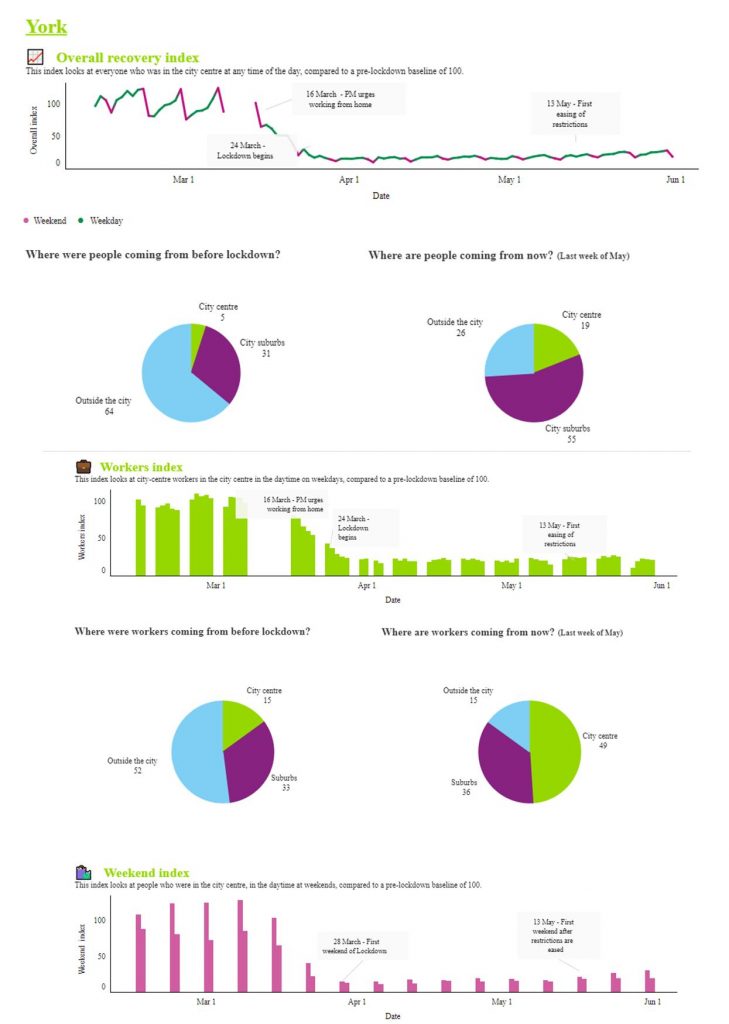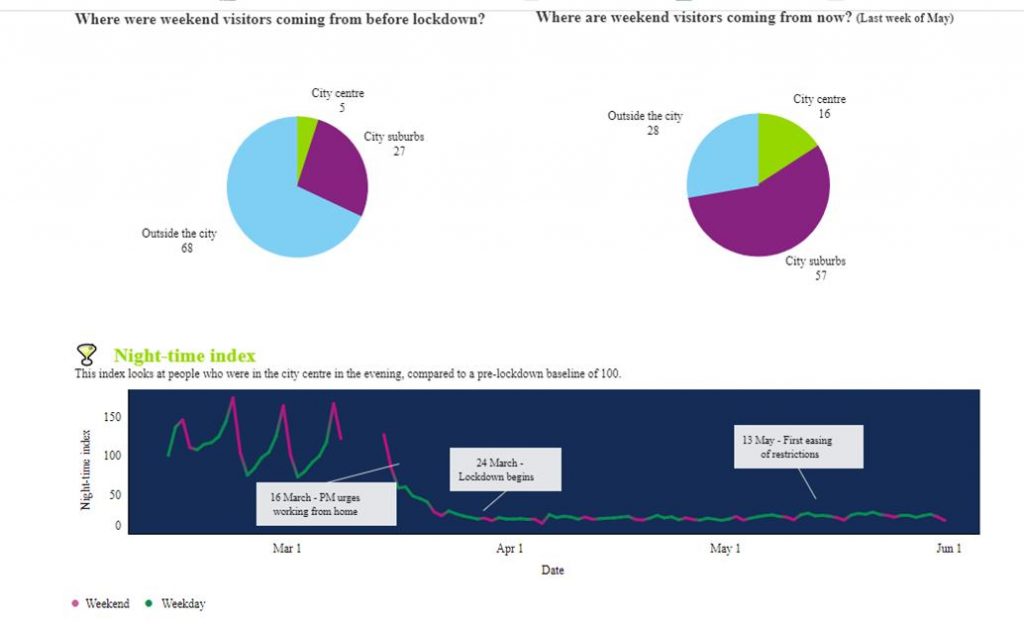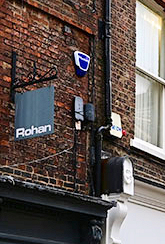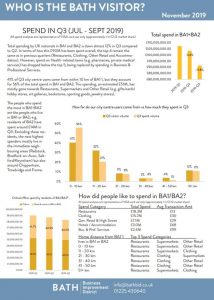There are signs of life in some organisations in the City as they begin to address the harsh post COVID realities.
The Council has issued business recovery kits which may aid social distancing particularity in shops.
The move comes on the day when the Centre for City’s releases details of how the health crisis has impacted on visitor numbers to the City centre. Not surprisingly the profile has changed radically with those travelling from the suburbs (both as shoppers and workers) now in the majority.
This will come as no surprise as foreign tourist numbers are, and are likely to remain, negligible. The next three months will be crucial for many retail and tourist businesses in the City.


The City is middle ranking so far in how well is is recovering its high street “footfall” compared to other Cities. It has a recovery index of 24 compared to the least affected (Aldershot with a score of 57 and the worst Cardiff with 11).
But it is early days and a more general return to work next Monday will tell us more.
So what needs to be done?
Clearly York’s visitor economy is going to depend, at least in the short term, on people travelling to the City from within Yorkshire. They will need to feel safe if they are to be persuaded to come.
It is vitally important therefore that such large spaces as exist in the City centre are fully utilised.
We understated that there are events planned for Parliament Street but it is less clear what use it will be made of assets like the Museum Gardens, Deans Park and the Nave of the Minster. Indeed, imaginative programming at the Minster – which could safely accommodate over a thousand people during periods of poor weather – may be vitally important in any marketing strategy.
All could potentially accommodate Arts events while maintaining social distancing rules.

The Council has already listed streets which will be pedestrianised.
Incredibly it failed to include Deangate, one of the widest streets in the City and which could – together with the Minster and Deans Park- provide an ideal events space. Events held there would complement those planned for the other side of the City to the benefit traders and attractions in the Stonegate neighbourhood.
In the longer term better use will need to be made of the river banks and the City Walls but, for a few weeks at least, the City will need to concentrate on promoting itself as a vibrant, safe and welcoming destination.
It is time now for Make it York, the Council , the theatres, museums, libraries and other organisations to publish their short and medium term regeneration proposals?


